Twelve-year-old Quinn loves her moms and her younger brother Olly, but often feels like she doesn’t fit in with the rest of her family. They’re adventurous and thrill seeking; she’d rather be reading or drawing.
On the way to the family’s annual vacation, her moms tell her and Olly that they’ve made some initial inquiries on a website that connects people with their donor siblings. It turns out that she and Olly have 16 genetic donor siblings. After dropping this information on them, however, the moms make it clear that they don’t want Quinn or Olly to connect with any of the donor siblings yet.
Quinn has long known that she and Olly were donor conceived, but has never thought about donor siblings. Could she be more like them than like her moms and brother? Olly, for his part, seems uninterested—but Quinn sneakily uses their mom’s computer to find out more. The website indicates that one of the donor siblings lives nearby—so she impersonates her moms to reach out.
Before long, however, a worrying possibility emerges (which is in the publisher’s blurb, so not really a spoiler). Could her donor sibling be her nemesis Monika, a snobby, bullying 13-year-old whose family is staying at the same hotel? Monika’s mom and dad have just told her that she’s donor-conceived, it turns out. The news comes as a shock to Monika, giving author Kristina Rahim the opportunity to offer a gentle lesson about being open with donor-conceived children about their creation (and showing a difference between non-queer families, where donor conception is often a last resort, and queer ones, where it is often a first opportunity).
Quinn isn’t thrilled by the idea that she and Monika could be related, but sees signs in Monika and Olly’s shared interests. Through conversations with an elderly man at the hotel, however, and through a near-mishap with Olly, she comes to realize how it’s fine not to look or act like other members of one’s family. There are still other opportunities for love and connection and expressing how well members of a family know each other, even if they’re not alike.
Rahim, a queer mom via donor conception herself, also throws in a few twists (which I won’t spoil) to keep things intriguing; suffice it to say that the story allows for all of its characters to make mistakes but to explain, learn, and forgive. It also, importantly, shows us that donor-conceived people may have a range of feelings about being donor conceived, depending on personality, circumstances, and how and when they learned about their creation. (My own donor-conceived son, who is now in college, has always felt more like Olly, for example, uninterested (as of this writing) in meeting his donor or potential donor siblings.)
The book helps fills a gap in LGBTQ-inclusive middle grade literature, which has been surprisingly lacking in books centering storylines about being donor conceived, much less having donor siblings. Its thoughtful and multifaceted take on the topic makes this a highly recommended read.
Mom and Quinn have fair skin; Mama has brown skin.







